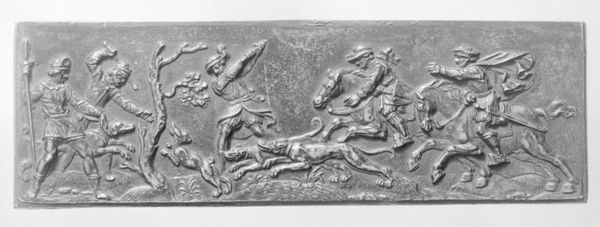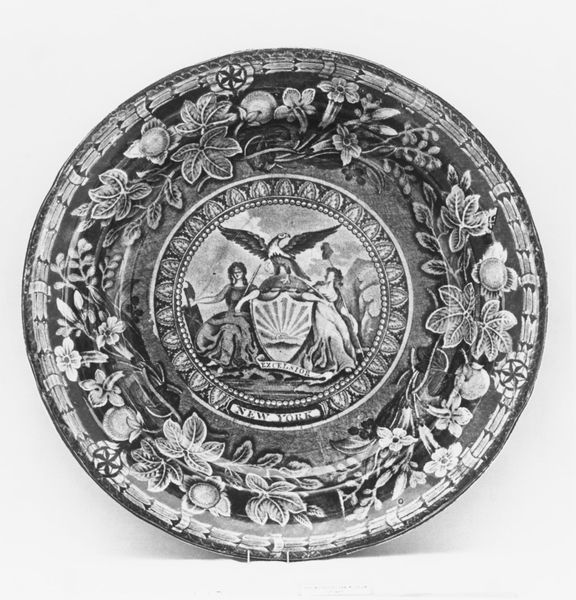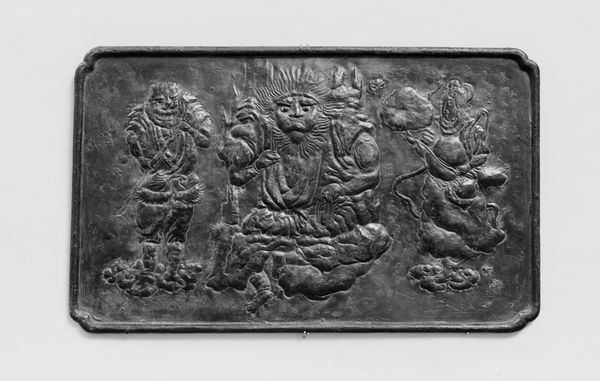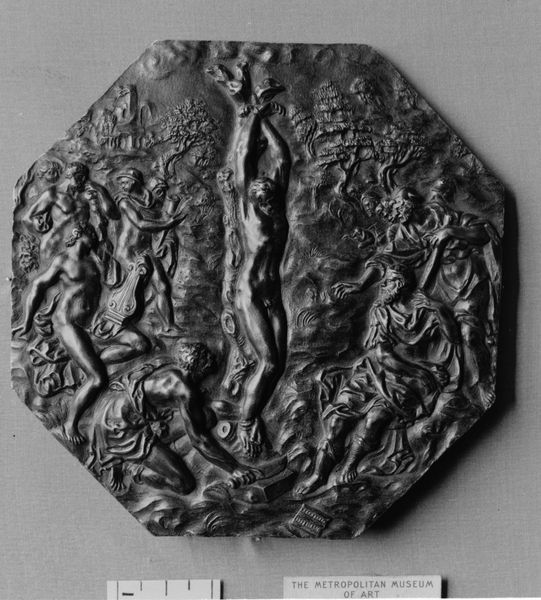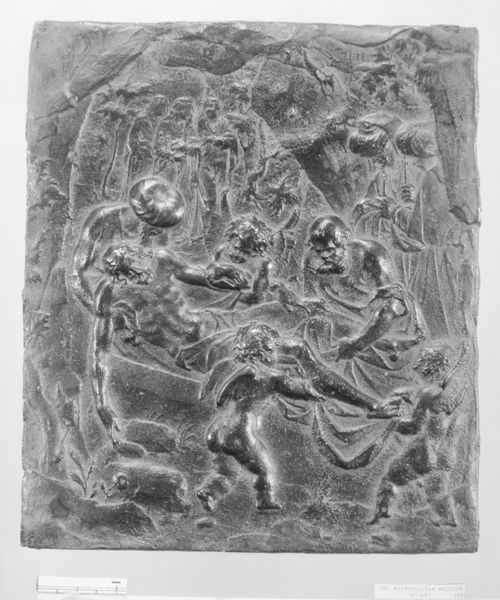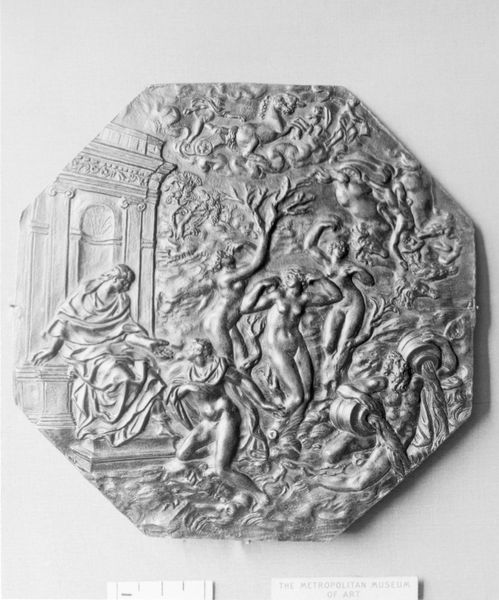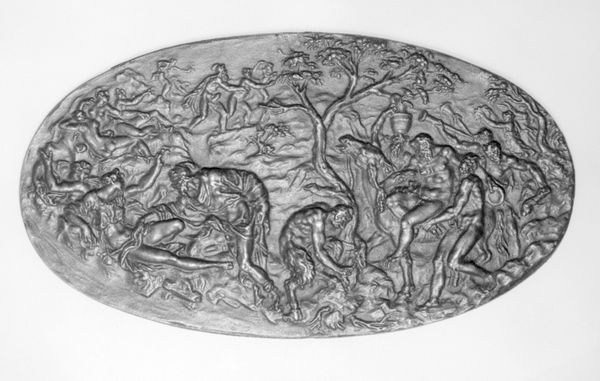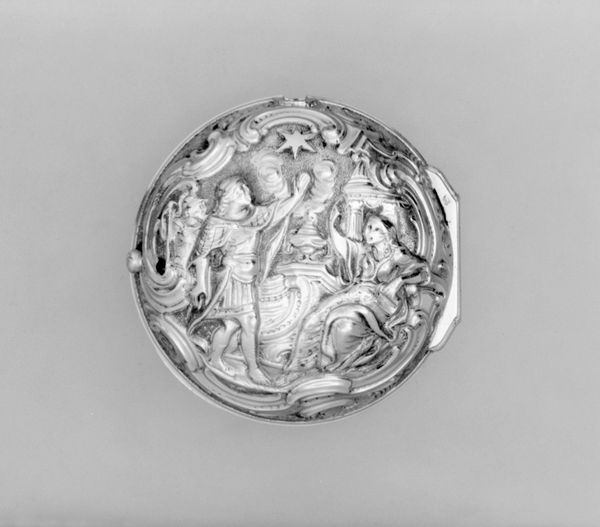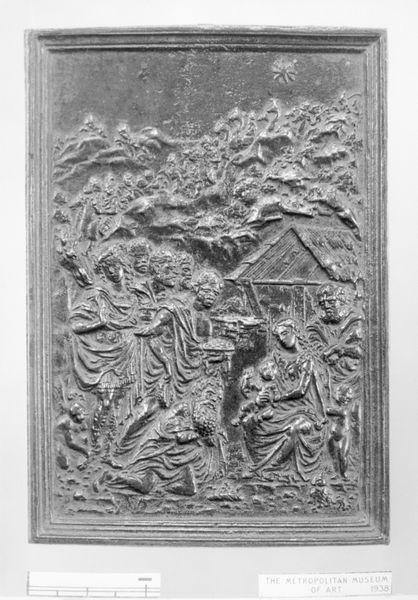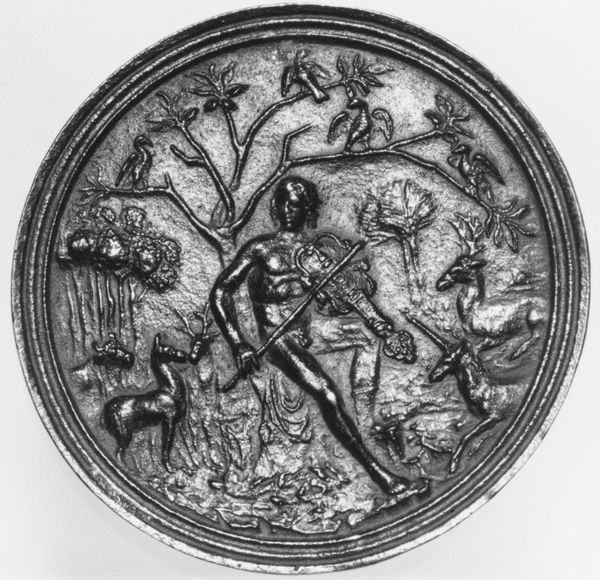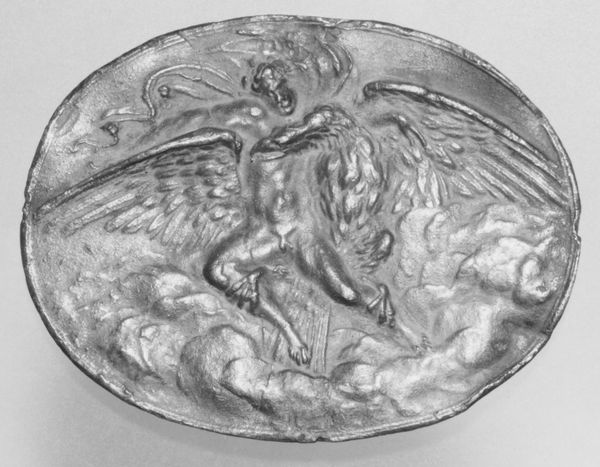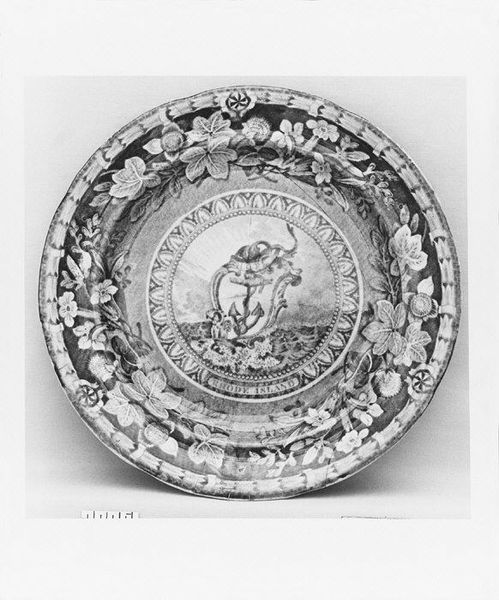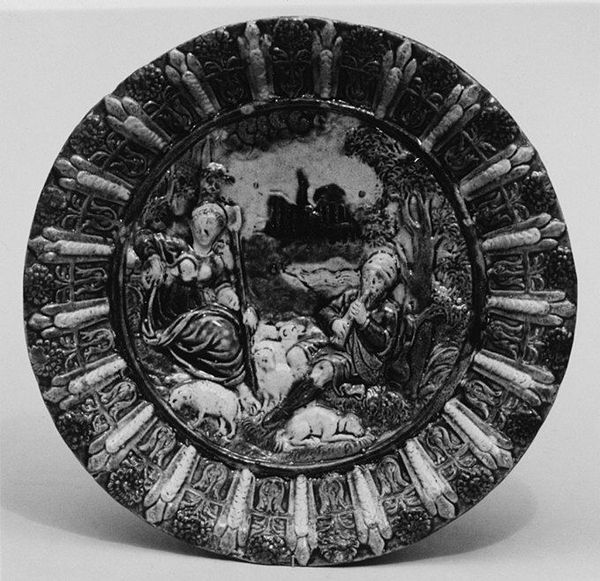
relief, bronze, sculpture
#
relief
#
bronze
#
figuration
#
sculpture
#
genre-painting
#
history-painting
#
decorative-art
#
italian-renaissance
#
organic texture
Dimensions: 6 1/2 × 5 1/8 in. (16.5 × 13 cm)
Copyright: Public Domain
Guglielmo della Porta made this bronze plaquette depicting a Bacchanalian Feast sometime in the 16th century. This small bronze relief would have likely been produced in Italy for collectors interested in classical antiquity. The bacchanal was a Roman festival dedicated to Bacchus, the god of wine, freedom, intoxication, and ecstasy. Here, Della Porta imagines a scene of revelry, with figures drinking, dancing, and cavorting in a wooded landscape. The composition draws on ancient sources while also echoing the work of High Renaissance artists like Raphael and Michelangelo. But Della Porta was also a sculptor who worked for the Papal court. Rome was the centre of Christendom and steeped in the classical tradition. This plaquette embodies that tension between the sacred and the profane, between classical precedent and Christian doctrine. To truly understand an artwork like this, we need to consider not only its formal qualities but also its place within the broader social and intellectual currents of its time. We can use sources such as letters, diaries, and inventories to better understand the networks of patronage, collecting, and artistic exchange that shaped its creation and reception.
Comments
No comments
Be the first to comment and join the conversation on the ultimate creative platform.
